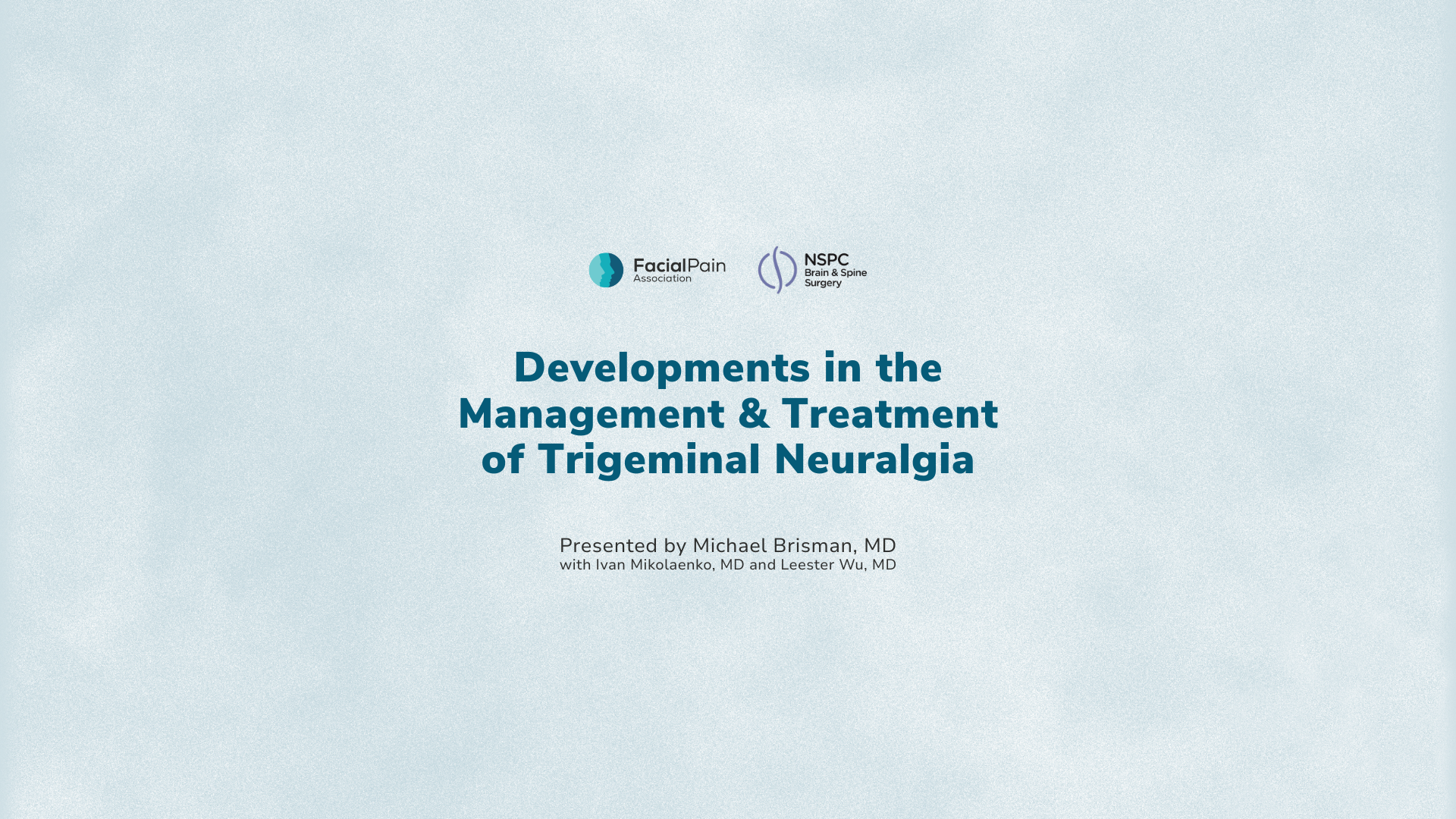By Gary D. Klasser, DMD, Professor of Diagnostic Sciences at LSUHSC School of Dentistry
/
The mission statement of the Facial Pain Association (FPA) stipulates the purpose of this patient organization is to serve those with neuropathic facial pain (NFP). Since dentistry is intimately involved with the face, both from an extraoral and intraoral perspective, it is a profession, due to its practices, that perfectly intersects with the goals and objectives of the FPA. Many patients who are experiencing NFP seek guidance and assistance from their oral healthcare provider due to the signs and symptoms associated with this perplexing and often debilitating condition. The characteristics of NFP are rather complex, and our understanding of its process is still somewhat rudimentary. Therefore, it is easy to understand why the presentation of this pain condition may pose significant difficulties for the oral healthcare provider since the structures the patient reports as painful often appear clinically normal. Unfortunately, this can often lead to misdiagnosis or incomplete diagnosis and result in misdirected or incomplete treatment by well-intentioned and caring oral healthcare providers.
To avoid these pitfalls, diagnosis must begin with a comprehensive history and clinical/imaging examination. Once the diagnosis of NFP is established, the oral healthcare provider must decide whether to treat these individuals or provide a referral to a healthcare professional who understands these neuropathic conditions. Another consideration that may confront the oral healthcare provider is that the patient with NFP may require dental treatment for an existing dental problem or for routine maintenance of their dental health. Hence, there is a great need to educate those students who are enrolled in dental schools as well as those who have graduated on these most concerning issues they may encounter during their careers.
Dentistry, like its medical counterparts, has specialties (twelve dental specialties in total) which are recognized and accredited by respective governing national organizations. Simply put, a specialist is an individual who devotes themselves to one subject or to one particular branch of a subject or pursuit. An example of a recognized specialist in dentistry would be an orthodontist, who is a dentist that has undergone training to specialize in the diagnosis, prevention, and treatment of irregularities in the jaw and teeth. Commonly, the orthodontist provides the patient with “braces.” In March 2020, the American Association of Orofacial Pain’s request to recognize orofacial pain as a dental specialty was granted by the National Commission on Recognition of Dental Specialties and Certifying Boards (NCRDSCB) based on compliance with the Requirements for Recognition of Dental Specialties as determined by the American Dental Association (ADA). The ADA states that “Dental specialties are recognized by the NCRDSCB to protect the public, nurture the art and science of dentistry, and improve the quality of care. Specialties are recognized in those areas where advanced knowledge and skills are essential to maintain or restore oral health.” As of March 2022, the NCRDSCB recognized the American Board of Orofacial Pain (ABOP) as the national certifying board for orofacial pain. Thus, ABOP represents the examining and certifying organization for qualified providers to be considered for specialty status when standards for providing appropriate orofacial pain care are met.
These events have resulted in legitimizing the field of orofacial pain, which is now considered a specialty of dentistry that encompasses the diagnosis, management, and treatment of pain disorders of the jaw, mouth, face, and associated regions. Orofacial pain disorders include but are not limited to temporomandibular muscle and joint (TMJ) disorders, jaw movement disorders, neuropathic and neurovascular pain disorders, headache, and sleep disorders. The orofacial pain specialist is dedicated to the evidenced-based understanding of the underlying pathophysiology, etiology, prevention, and treatment of these disorders and improving access to interdisciplinary patient care. Due to these events, patients who are experiencing NFP now have a legitimate dental resource who has the recognized specialized training to assist in the management of their condition.
The FPA, recognizing that dentistry is integral for complete patient management and more specifically for those with neuropathic pain, is making great strides in implementing various initiatives to enhance their engagement with this profession. The FPA clearly understands and acknowledges that these conditions are multi-etiological and require a multidisciplinary team approach, thus recognizing that the partnering and involvement of dentistry is essential in providing patients with the ultimate care.









